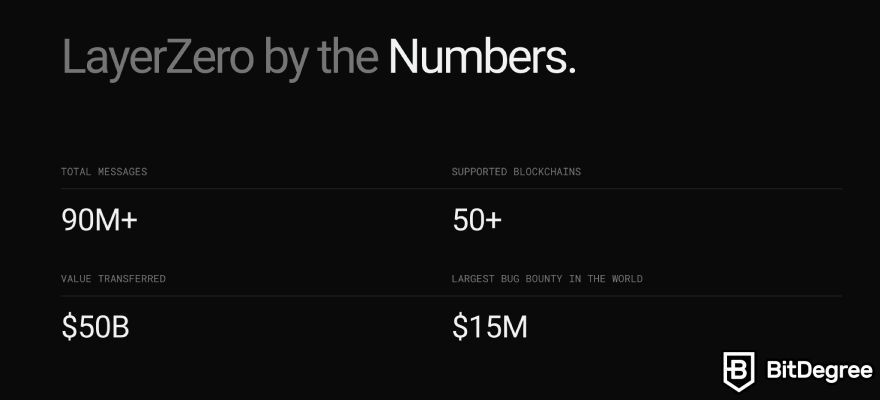LayerZero: A Game-Changer in Blockchain Interoperability
Key Takeaways
- LayerZero addresses blockchain fragmentation by enabling seamless integration and communication across diverse blockchain networks, facilitating a more interconnected Web3 environment;
- LayerZero advances blockchain interoperability through its omnichain approach and alignment with crypto principles, demonstrated by its significant milestones in message transmission, blockchain support, and value transfer;
- The protocol parallels TCP/IP in standardizing blockchain development and innovates in the blockchain transport layer, with the potential launch of its own native token.
In a landscape where the seamless integration of blockchains is crucial for the advancement of the crypto industry, LayerZero emerges as a groundbreaking solution.
This innovative protocol stands out as "an immutable, permissionless, and censorship-resistant" framework, with the primary function of connecting blockchain networks.
As they themselves elaborate, LayerZero represents a bold stride towards the realization of a truly interconnected Web3 world. In other words, the goal is to transcend the limitations of individual chains.
The Challenge of Blockchain Fragmentation
The rapid evolution of blockchain technology has led to the proliferation of numerous blockchains, each with its unique strengths and limitations. This diversity, while beneficial, has also resulted in a fragmented ecosystem. Developers and users often face the dilemma of choosing between blockchains, balancing factors like speed, cost, security, and user base.
The challenge lies in creating a cohesive environment where these isolated blockchains can effectively communicate and interact, thus enhancing user experience and broadening the potential applications of blockchain technology.
LayerZero addresses this challenge head-on by offering a protocol that allows developers to build applications that operate across multiple blockchains. It enables the transfer of data, tokens, and external function calls between chains while maintaining the autonomy and control of application developers. This omnichain approach empowers developers to create unified applications, tokens, and data primitives, irrespective of the underlying blockchain. LayerZero's philosophy resonates with the core tenets of the crypto ethos - permissionless interaction, resistance to censorship, and immutability.
This omnichain approach empowers developers to create unified applications, tokens, and data primitives, irrespective of the underlying blockchain. LayerZero's philosophy resonates with the core tenets of the crypto ethos - permissionless interaction, resistance to censorship, and immutability.
As of writing this, LayerZero can boast of such statistics:
- Over 90 million messages sent;
- Over 50 supported blockchains;
- $50 billion in value transferred;
- $15 million bug bounty program.
The LayerZero bug bounty is exceptionally notable, claiming to be the largest in the world.
The Vision of an Omnichain Future
LayerZero's mission parallels the role of TCP/IP in standardizing internet development, aiming to establish a similar standard for blockchain application development. The protocol envisions a future where blockchains are akin to nodes in an expansive, high-performance network. This ambitious goal is encapsulated in the concept of "omnichain" - a unified, cross-chain development platform that could significantly influence the future trajectory of the crypto industry.
LayerZero's Operating Principles
At its core, LayerZero operates on three fundamental principles:
- Permissionless: True to the decentralized spirit of crypto, LayerZero allows anyone to build and interact with its protocol, fostering an open and inclusive environment.
- Censorship-Resistant: The protocol ensures that messages are verified and executed in order, maintaining the integrity and order of transactions.
- Immutable: With smart contracts forming the endpoints on each chain, LayerZero offers a secure and unchangeable interface for cross-chain interactions.
A New Paradigm in Blockchain Transportation
LayerZero differentiates itself by operating at the transport layer of the blockchain economy. Unlike other cross-chain solutions that compete to verify messages, LayerZero acts as an aggregator of various verification methods. Developers have the liberty to choose and combine different Decentralized Verifier Networks (DVNs) based on their security needs, allowing for a bespoke security approach.
While the project doesn't currently have a nativ



































